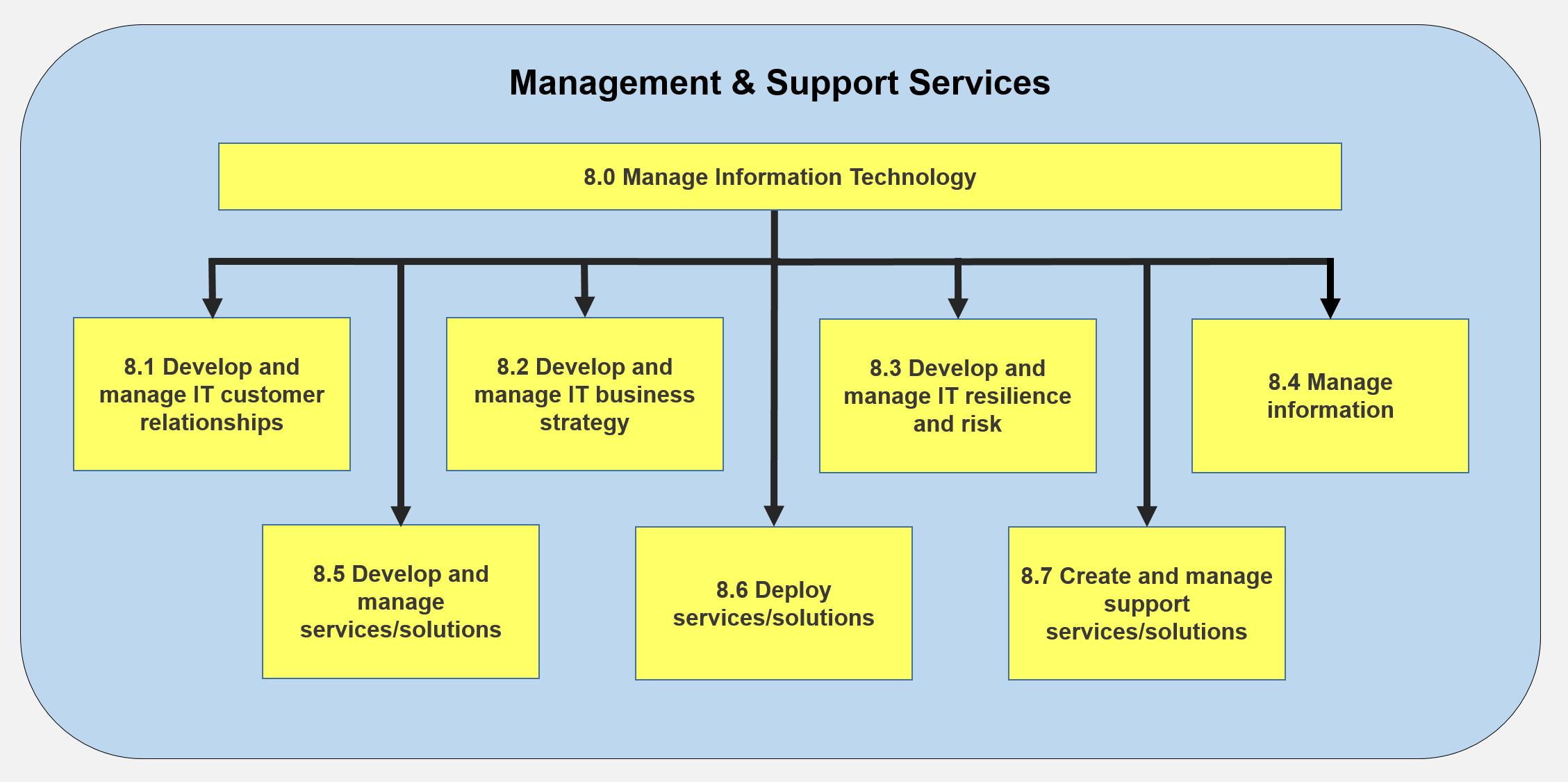APQC Framework - classifier of standard business processes
Process Classification Framework APQC (APQC PCF) – is a universal cross-industry classifier of standard business processes developed by APQC (American Productivity & Quality Center). APQC constantly maintains the relevance and improves the framework’s structure.
Originally conceived as a tool for productivity improvement projects, the framework has turned into a universal reference model of business processes that can be adapted to the tasks and requirements of any company. Also, it can become the basis for building company’s own business process management system. Companies use the APQC PCF for benchmarking and performance management, as well.
It is important to note APQC also develops industry classifiers of business processes that describes the specifics of various business industries (telecommunications, automotive, pharmaceutical, etc.). At the same time, each industry-specific classification is based on the APQC cross-industry taxonomy.
The APQC PCF structure consists of a five-level hierarchy of processes: Categories Process Groups, Processes, Activities, and Tasks.
The first level, Categories, contains a high–level view of standard company processes and consists of 13 categories. These categories are divided into 2 areas: Operating Processes and Management & Support Services (Fig. 1).

Figure 1. Categories in the APQC Framework
These categories describe the following areas of company’s activity and processes:
-
“1.0 Develop Vision and Strategy” – assessment of the external and internal environment, development of strategy and mission, measurement of initiatives, development of organizational structure and business models.
-
“2.0 Develop and Manage Products and Services” – development and management of product and service portfolios, development of products and services (design of specifications and projects, development and test of prototypes), management of patents and regulatory requirements.
-
“3.0 Market and Sell Products and Services” – conduction of market and customer research, development of market strategy, pricing, positioning and promotion of products and services, development of sales plans, development of relationships with customers and partners.
-
“4.0 Manage Supply Chain for Physical Products” – development and management of supply chains, management of resources, production of products, management of quality, logistics and warehousing.
-
“5.0 Deliver Service” – management of service delivery resources, execution of service delivery.
-
“6.0 Manage Customer Service” – management of customer relationship after sales, customer loyalty support, warranty service.
-
“7.0 Develop and Manage Human Capital” – development and management of human resources strategy, recruitment, management of employee relationship, redeployment and retirement of employees.
-
“8.0 Manage Information Technology” – development and management of IT strategy, management of data protection, development, implementation, support and delivery of IT services.
-
“9.0 Manage Financial Resources” – budgeting, cost and revenue accounting, management of financial reporting and treasury operations, labour payment, tax management.
-
“10.0 Acquire, Construct, and Manage Assets” – acquirement and disposal of assets, construction and maintenance of productive assets.
-
“11.0 Manage Enterprise Risk, Compliance, Remediation, and Resiliency” – management of risks, regulatory compliance, maintenance of continuous business operations.
-
“12.0 Manage External Relationships” – management of relationship with investors, government, industries, media, management of legal and ethical issues.
-
“13.0 Develop and Manage Business Capabilities” – management of business processes, portfolios, projects, quality, corporate knowledge, environmental health and safety, benchmarking.
Each process Category is decomposed into standard Process Groups that describe the second level of business processes. For example, the category “8.0 Manage Information Technology” contains 7 process groups (Fig. 2).

Figure 2. Process groups of category “8.0 Manage Information Technology”
Next, the Process Groups are decomposed into third-level Processes, and each Process is decomposed into Activities at the fourth level.
For most processes of the PCF APQC, the fourth level is the final one. But for some processes there is an additional decomposition of Activities into fifth-level Tasks. For example, such a decomposition is described for the activity “8.5.5.1 Execute IT service/solution maintenance lifecycle” (Fig. 3).

Figure 3. Decomposition of activity “8.5.5.1 Execute IT service/solution maintenance lifecycle”
As the APQC framework covers a large number of various universal processes, its use can help companies to identify and describe their own business processes, regardless of the specifics of their activities. A complete list of the APQC framework processes with details up to the fifth level is available on the APQC website.
If you have any questions, please, contact us by the contact form or at info@dainovaro.com and we provide you with more information.

 +40 (746) 44 97 97
+40 (746) 44 97 97
 info@dainovaro.com
info@dainovaro.com

